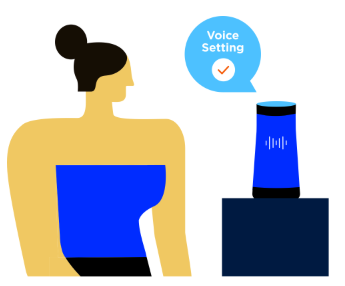Following VUI best practices that include continual research, voice iterations and user testing, you can collect critical insights into those areas where your system is not meeting your customers’ needs. Based on real data from your users, product designers can modify voice responses to sound more natural and in tune with your customers’ unique needs and expectations.
4. Be a teacher and a guide
Are your customers getting the greatest value from your VUI? It depends. If they don’t know how to use it or only have a surface understanding of its capabilities, they’re not likely to find out what else it can do on their own.
Building learning tools and prompts into your system will help with user adoption and satisfaction. Follow learning best practices, and present additional features or options in small chunks that don’t interfere with the experience or overwhelm users with more information than they can process.
Since we first store all new learning in our short-term memory, deliver helpful hints in short bursts followed by a specific action that will move the new learning to the user’s long-term memory.
5. Find the right partner
One of the greatest challenges businesses face today is the ability to hire the right talent at the right time. The importance of having the right person in place is just as important as finding the right partner and platform to help bring your voice strategy to life.
For your customer, interacting with your VUI should be akin to chatting with the most personable, witty and empathetic customer service representative on your payroll. Not only should your VUI answer questions, provide support and move conversations along, it must be able to do so using natural language and with the speed and accuracy we expect from human interactions. Not all Voice AI platforms can do that.
Reduce customer frustration and encourage continued engagement by turning a bad experience into a delightful one by choosing the right Voice AI platform to help you deliver truly meaningful and memorable customer experiences.
The market saturation of voice-enabled products will create new challenges for companies looking to differentiate themselves from competitors. Those who are able to provide the most natural, easy and memorable voice experiences will become known for their brand voice as much as for their products. Market leaders are already implementing VUIs that deliver unique and delightful customer experiences that create brand affinity and grow market share.
Discover how your team can build a better voice user interface with advice from brands like Pandora, Mercedes-Benz, RAIN, Voxable and Marvee in this comprehensive VUI Best Practice Guide.
Karen Scates is a storyteller with a passion for helping others through content. Argentine tango, good books and great wine round out Karen’s interests.











